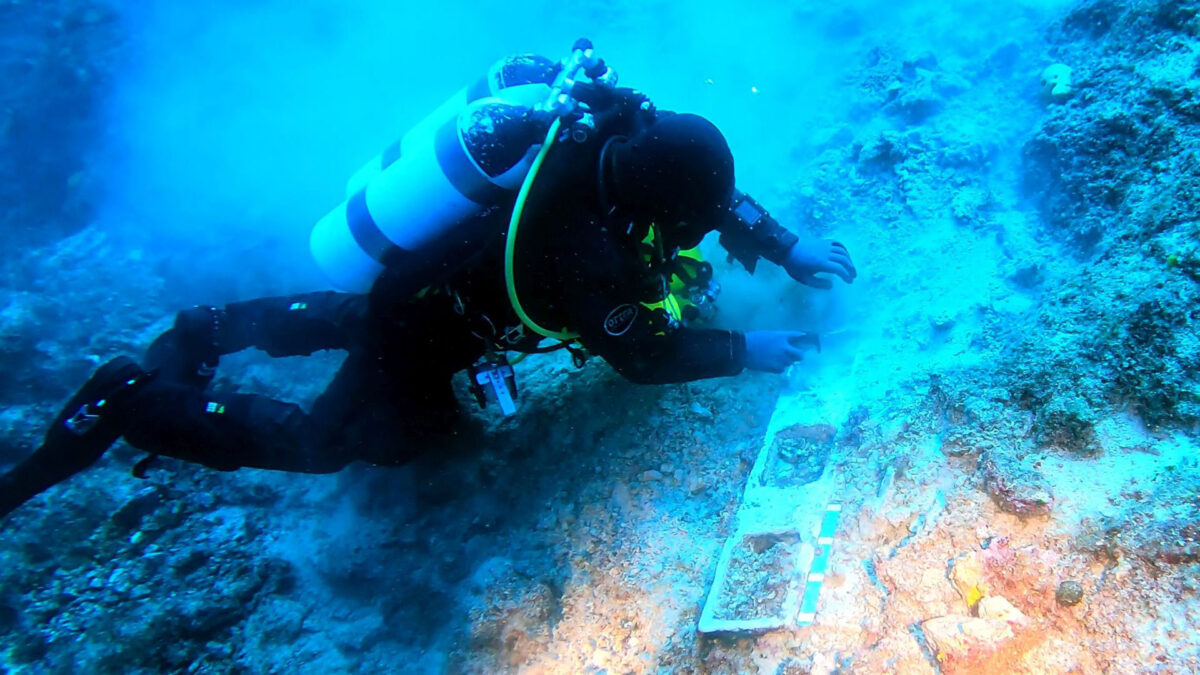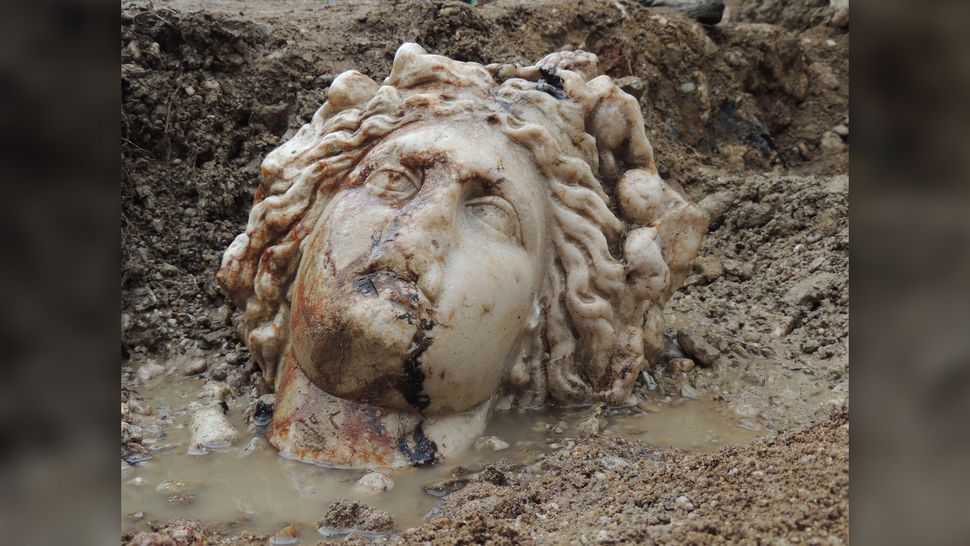There are only three more constellations in the constellation series, and we will be talking about two of them today. But don't worry, I have a few bonus posts lined up around the theme. Today, we'll be talking about Ursa Major and Ursa Minor: the big and little bear.
Ursa Major (from the Latin: 'Larger She-Bear') is also known as the Great Bear and Charles' Wain. It is visible throughout the year in most of the northern hemisphere. Ursa Minor (from the Latin 'Smaller She-Bear') is also known as the Little Bear. Like Ursa Major, the tail of the Little Bear may also be seen as the handle of a ladle, hence the name Little Dipper. Both are amongst the 48 constellations listed by the 2nd century astronomer Ptolemy, and remain two of the 88 modern constellations. Ursa Minor is notable as the location of the north celestial pole, although this will change after some centuries due to the precession of the equinoxes.
The first mention of Ursa Minor in ancient Hellenic texts was by 6th century BC philosopher Thales of Miletus, who pointed out that it was a more accurate guide to finding true north than Ursa Major. This knowledge had reportedly come from the Phoenicians in the eastern Mediterranean, and the constellation bore the term Phoenikē. Homer had previously only referred to one 'bear', leading to speculation over what he saw the stars of Ursa Minor as, or whether they were recognised at all. From Hyginus' '
Astronomica':
"There is a great diversity of opinion, too, as to why the Lesser Bear is called Phoenice, and why those who observe her are said to navigate more exactly and carefully; why, also, if she is more reliable than the Great Bear, al do not watch her. These people do not seem to realize the reason for her being called Phoenice. Thales of Miletus, who searched into these matters carefully, and first called her Bear, was by birth a Phoenician, as Herodotus says. Therefore all those in the Peloponnesus use the first Arctos; the Phoenicians, however, observe the one they received from her discoverer, and by watching her carefully, are thought to navigate more exactly, and suitably call her Phoenice from the race of her discoverer." (II.2)
The ancient Hellenes linked Ursa Minor and Ursa Major to the myth of Kallistô and her son Arcas, both placed in the sky by Zeus. In this myth, Zeus and Kallistô had a son together: Arcas. After Arcas was born, Hera caught wind of the affair and turned Kallistô into a bear. Alternatively, Kallistô was a priestess of Artemis, and Artemis punished her for losing her virginity by turning her into a bear. Because of the metamorphosis, the boy was raised by his maternal grandfather Lycaon. When Arcas grew up, he went out to hunt and found a beautiful bear. He chased her through the woods. The bear--his transformed mother Kallistô--ran towards him as soon as she recognized her son. Arcas was terrified and raised his bow to shoot her. Zeus intervened swiftly and placed Kallistô and her son in the sky. In this interpretation, Kallistô became Ursa Major and Arcas either Ursa Minor or Boötes. A furious Hera asked Tethys to chain the two to the night's sky, so that the constellations would never sink below the horizon and receive water. An alternate myth tells of two bears that saved Zeus from his murderous father Kronus by hiding him on Mount Ida. Later Zeus set them in the sky, but their tails grew long from being swung by the God. Hyginus describes all of this in the following way:
"We begin, then as we said above, with the Great Bear. Hesiod says she is named Callisto [Kallistô], daughter of Lycaon, who ruled in Arcadia. Out of her zeal for hunting she joined Diana [Artemis], and was greatly loved by the goddess because of their similar temperaments. Later, when made pregnant by Jove [Zeus], she feared to tell the truth to Diana. But she couldn’t conceal it long, for as her womb grew heavier near the time of her delivery, when she was refreshing her tired body in a stream, Diana realized she had not preserved her virginity. In keeping with her deep distrust, the goddess inflicted no light punishment. Taking away her maiden features, she changed her into the form of a bear, called arktos in Greek . In this form she bore Arcas.
But as Amphis, writer of comedies, says, Jupiter, assuming the form of Diana, followed the girl as if to aid her in hunting, and embraced her when out of sight of the rest. Questioned by Diana as to the reason for her swollen form, she replied that it was the goddess’ fault, and because of this reply, Diana changed her into the shape we mentioned above. When wandering like a wild beast in the forest, she was caught by certain Aetolians and brought into Arcadia to King Lycaon along with her son as a gift, and there, in ignorance of the law, she is said to have rushed into the temple of Jove Lycaeus. Her son at once followed her, and the Arcadians in pursuit were trying to kill them, when Jupiter, mindful of his indiscretion, rescued her and placed her and her son among the constellations. He named her Arctos, and her son Arctophylax. About him we shall speak later.
Some, too, have said that when Callisto was embraced by Jove, Juno in anger turned her into a bear; then, when she met Diana hunting, she was killed by her, and later, on being recognized, was placed among the stars.
But others say that when Jupiter was pursuing Callisto in the woods, Juno, suspecting what had happened, hurried there so that she could say she had caught him openly. But Jove, the more easily to conceal his fault, left her changed to bear form. Juno, then, finding a bear instead of a girl in that place, pointed her out for Diana, who was hunting, to kill. Jove was distressed to see this, and put in the sky the likeness of a bear represented with stars.
This constellation, as many have stated, does not set, and those who desire some reason for this fact say that Tethys, wife of Ocean, refuses to receive her when the other stars come there to their setting, because Tethys was the nurse of Juno, in whose bed Callisto was a concubine.
Araethus of Tegea, however, writer of histories, says that she wasn’t Callisto, but Megisto, and wasn’t the daughter of Lycaon, but of Ceteus, and so granddaughter of Lycaon. He says, too, that Ceteus himself was called the Kneeler. The other details agree with what has been said above. All this is shown to have taken place on the Arcadian mountain Nonacris.
Aglaosthenes, who wrote the Naxica, says that she is Cynosura, one of the nurses of Jove from the number of the Idaean nymphs. He says, too, that in the city called Histoe, founded by Nicostratus and his friends, both the harbour and the greater part of the land are called Cynosura from her name. She, too, was among the Curetes who were attendants of Jove. Some say that the nymphs Helice and Cynosura were nurses of Jove, and so for gratitude were placed in the sky, both being called Bears. We call them Septentriones." (II.1, II.2)
Because Ursa Minor consists of seven stars, the Latin word for "North" (i.e. where Polaris points) is septentrio, from septem (seven) and triones (oxen), from seven oxen driving a plow, which the seven stars also resemble. This name has also been attached to the main stars of Ursa Major. About this, Hyginus also has something to say:
"But many have said that the Great Bear is like a wagon, and the Greeks do call it amaza. This reason has been handed down: Those who, at the beginning, observed the stars and supposed the number of stars into the several constellations, called this group no “Bear” but “Wain,” because two of the seven stars which seemed of equal size and closest together were considered oxen, and the other five were like the figure of a wagon. And so the sign which is nearest to this they wished to be called Boötes. We shall speak of him later on. Aratus, indeed, says that neither Boötes nor the Wain has these names for the reason above, but because the Bear seems, wagon-like, to wheel around the pole which is called North, and Boötes, is said to drive her. In this he seems to be considerably in error, for later, in connection with the seven stars, as Parmeniscus says, twenty-five were grouped by certain astronomers to complete the form of the Bear, not seven. And so the one that followed the wagon and was formerly called Boötes, was now called Arctophylax [Bear Watchter], and she, at the same time that Homer lived, was called Bear. About the Septentriones Homer says that she was called both Bear and Wain; nowhere does he mention that Boötes was called Arctophylax." (II.2)
In a variant of the story, in which it is
Boötes that represents Arcas, Ursa Minor represents a dog. This is the older tradition, which explains both the length of the tail and the obsolete alternate name of Cynosura (the dog's tail) for Polaris, the North Star. Cynosura is also described as a nurse of Zeus, honoured by the God with a place in the sky.
Ursa Major is visible at latitudes between +90° and −30°, and best visible at 21:00 (9 p.m.) during the month of April. Ursa Minor is visible at latitudes between +90° and −10°, and best visible at 21:00 (9 p.m.) during the month of June.

.png)



